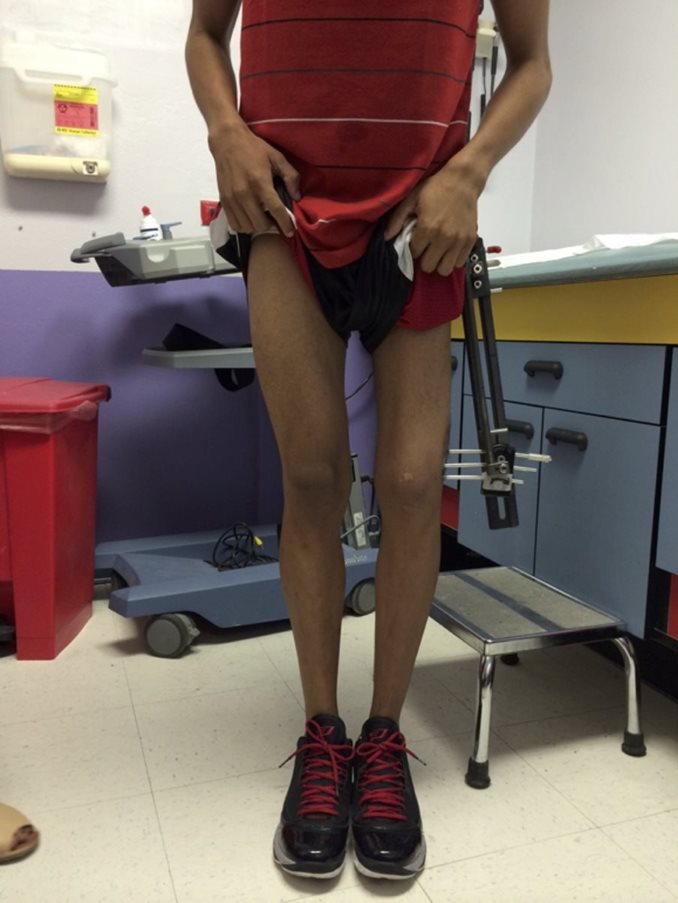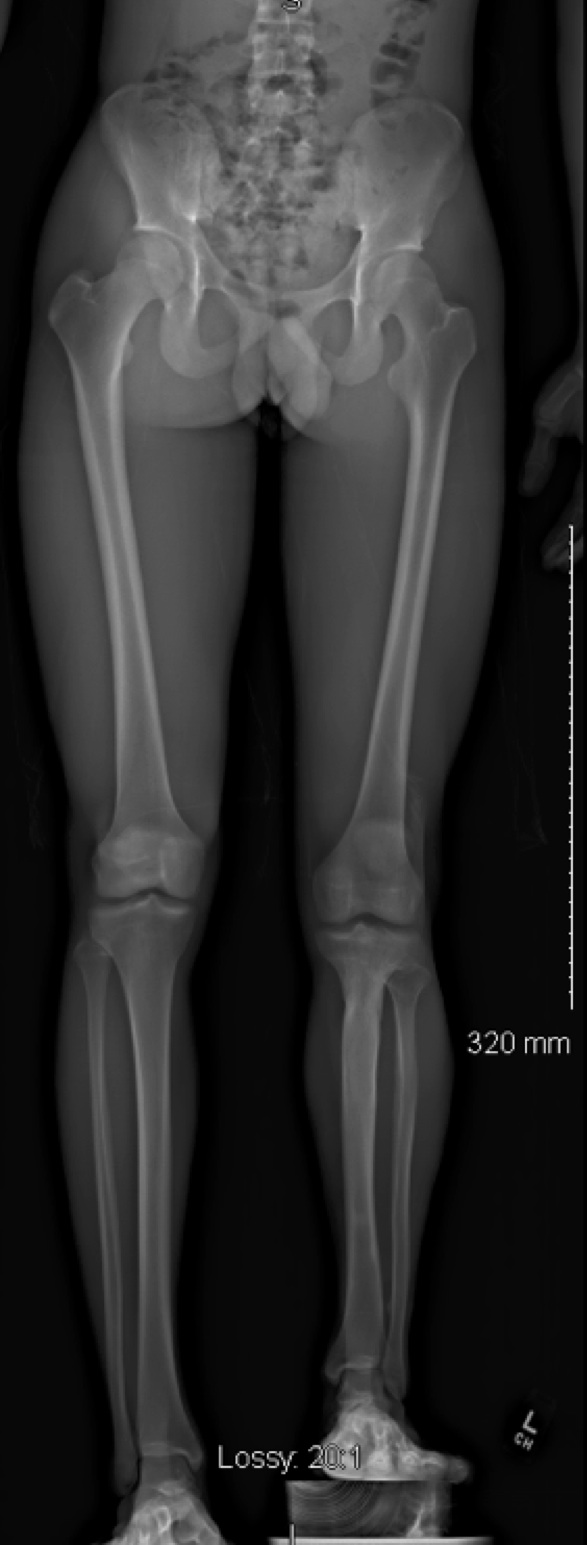Overview

Child with external fixator for lengthening the left femur.
Causes
There are many causes of LLD. These include birth conditions such hemihypertrophy, proximal focal femoral deficiency, and skeletal dysplasias. They can include nerve problems such as polio or cerebral palsy. There can also be problems from trauma, infection or tumor affecting a normal growth plate.
Associated problems
With a large LLD, patients may experience back pain or hip pain. There may be a curve in the back. A limb length discrepancy may lead to walking problems or toe walking. The heel cord may become tight from toe walking.
Evaluation
The doctor will examine a child with LLD to estimate the difference and for tight tendons. It’s common to have the child stand with the shorter leg on a block for the exam. X-rays or CT scans may be used to measure the difference. The doctor can calculate how much of a difference there will be when your child is an adult. Treatment will be planned based on that difference. It is assumed that girls will stop growing when they are around 14 years old and boys will stop growing when they are around 16 years old.
Treatment
Non-Operative
For mild LLD (usually less than 2 centimeters), a shoe lift may be used. If the patient is comfortable, the plan may be to watch for changes.

X-ray of child with limb length discrepancy standing on a block.
Operative
If the doctor expects the difference in limb lengths to be greater than 2 centimeters, surgery may be recommended.
If the difference is expected to be between 2 and 5 centimeters when your child is done growing, the growth on the long leg can be slowed down so that the shorter leg catches up. This is done with a surgery to stop growth at the growth plate or by placing surgical plates over the growth plates to slow the growth down. Either of these options is an outpatient procedure.
If the difference is expected to be over 5 centimeters, the shorter side can be lengthened. This is a much bigger surgery that involves cutting the bone on the short side and using a device to slowly lengthen it. This can be done with a device on the outside of the leg (as shown) or with an implant inside the leg. This process may take months, but patients will be able to walk and go to school for much of the treatment.
More Information
Condition QR Code:


 POSNA.org
POSNA.org


